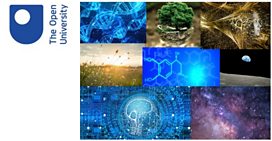Atmospheric Pollutants and Where to Find Them
Marnie Chesterton and guests discuss the myths around Ultra Low Emission Zones. Also, how forests become carbon sources instead of sinks, and the origins of domestic horses.
This week London's Ultra Low Emission Zone was extended to 18 times its previous size. In an effort to cut levels of various nitrogen oxides and other gases dangerous to humans from urban air, cities encouraging lower emission vehicles is a trend soon stretching across the UK and other European countries. But some are sceptical as to their efficacy. Dr Gary Fuller of Imperial College London is author of The Invisible Killer, and has been studying the air in London and elsewhere since these zones began.
As COP26 begins in Glasgow, a wealth of climate science is being published and publicised. Victoria Gill describes a couple of stories this week that point out quite how complex the science is, let alone the diplomacy and economics. Whilst the world's forests taken as a whole undoubtedly still capture more CO2 than they release, research this week shows that ten of Unesco's World Heritage Forests - making up for an area twice the size of Germany - have in the last ten years actually moved from being a carbon sink to a carbon source. There are several reasons, land use pressure being one of them, but also extreme climate events like wildfires (and even a hurricane in one instance) have tipped the balance, and show what how sharp the knife edge is for natural resilience. Meanwhile, the Financial Times reports that scientists have found an unexpected outflow of methane into the atmosphere from a site very close to the COP26 conference centre in Glasgow, highlighting just how great a challenge net zero will be.
Alongside some of humans' most earth-changing achievements, the domestication of the horse stands as something outstanding in human history. Without it, war, traded and culture would be unrecognizable. But quite when and where the modern horse originated has been something of a mystery. In Nature this week, researchers have published an extensive study into ancient DNA that seems to pinpoint finally a moment and a place where this happened, 4,200 years ago. Geoff Marsh takes Marnie for a canter through the mystery.
Presenter: Marnie Chesterton
Producer: Alex Mansfield
Made in association with The Open University
Last on
![]()
大象传媒 Inside Science is produced in partnership with The Open University.
Broadcasts
- Thu 28 Oct 2021 16:30大象传媒 Radio 4
- Thu 28 Oct 2021 21:00大象传媒 Radio 4
Explore further with The Open University
Discover more fascinating science content with The Open University
Podcast
-
![]()
大象传媒 Inside Science
A weekly programme looking at the science that's changing our world.



